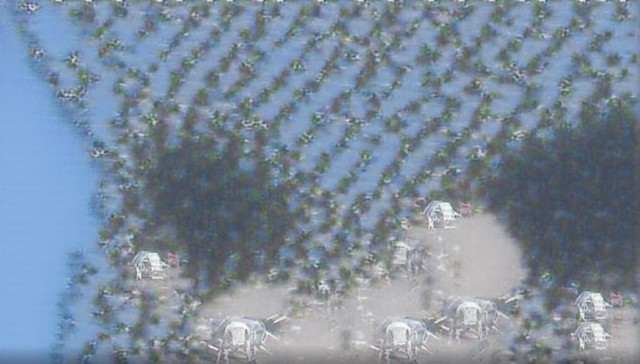Gradient Descent into the Wetlands (2020). How difficult will it be to return this pristine warmth and splendor, woven from the distant past – even then, at the time of dawn, when these strange buildings vaguely resemble cathedrals. However, many of us still don’t see the world becoming “one big layout.” And everything else in nature – adaptation to changes, an increase in the number of small plants, a change in the outlines of cacti, the development of mountains, and so on – would become conscious and therefore natural. As soon as a person would find out that the world around him is not just a flat, phantom reflection in his eyes, then he would see a whole ocean of things and events. Just like when a human wiped her face today with a dirty dust cloth and looked at the mirage that appeared before her eyes.
Nature is coming to an end, it is exhausted, burnt out and is pumped into a digital representation of a comfortable, romanticized, safe dream space similar to a wallpaper. If the inhuman, possessing the will, decided to restore the environment and return equal access to it, using big data and machine optics – those tales that the first robotic vacuum cleaners told each other – the world would turn out to be strange, psychedelic and eco-cybernetic. Nature, according to Karen Barad, embodies queer: it is changeable, confused and is not predisposed to something specific. The images produced by neural networks are as queer as nature itself.
Thanks to the attentive machines, we have received video reconstruction. Dataset consists of footage from surveillance cameras and becomes a source for an adversarial network, for a representation of the predicted future world. Initially, the machines were designed to convert static images from one style to another, but we converted them for the task of predicting consecutive images in the video (based on pix2pixHD).
Wetlands are one of the main sources of biodiversity on Earth. Therefore, they were chosen by neural networks as an object for restoration and augmentation. Working scheme is based on the principles of language modeling, but instead of words they operate on music samples. Hierarchical trees from recurrent modules (namely, SampleRNN) are used to recreate various sound qualities at varying time scales.
Most of what remains after us are glitches, quotes and collages of all kinds of incompatible substances. With them you could swim in the pool or write an essay. The experiences will be very different from the accepted norms, and each of these changes will take on an anomalous character or even lead to very unexpected consequences. Alien’s consciousness can deliberately scoff at the laws of the past. Is there a real threat here that the computer will actually create a whole world with the same tools of destruction? There is no need to reinvent a world without life.
More details: https://vergazova.com/en/gradient-descent-wetlands/
